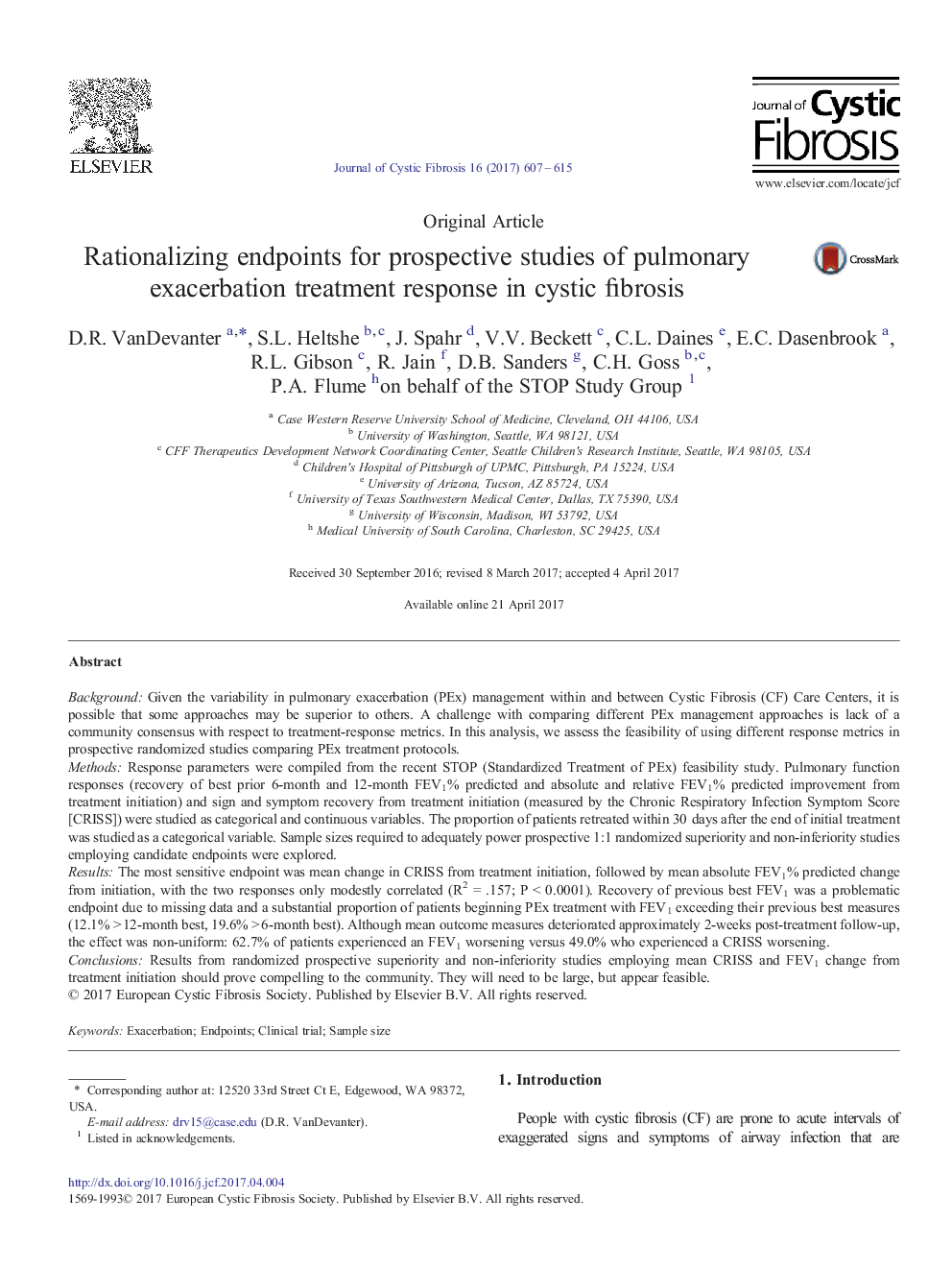| کد مقاله | کد نشریه | سال انتشار | مقاله انگلیسی | نسخه تمام متن |
|---|---|---|---|---|
| 5724502 | 1609416 | 2017 | 9 صفحه PDF | دانلود رایگان |
BackgroundGiven the variability in pulmonary exacerbation (PEx) management within and between Cystic Fibrosis (CF) Care Centers, it is possible that some approaches may be superior to others. A challenge with comparing different PEx management approaches is lack of a community consensus with respect to treatment-response metrics. In this analysis, we assess the feasibility of using different response metrics in prospective randomized studies comparing PEx treatment protocols.MethodsResponse parameters were compiled from the recent STOP (Standardized Treatment of PEx) feasibility study. Pulmonary function responses (recovery of best prior 6-month and 12-month FEV1% predicted and absolute and relative FEV1% predicted improvement from treatment initiation) and sign and symptom recovery from treatment initiation (measured by the Chronic Respiratory Infection Symptom Score [CRISS]) were studied as categorical and continuous variables. The proportion of patients retreated within 30Â days after the end of initial treatment was studied as a categorical variable. Sample sizes required to adequately power prospective 1:1 randomized superiority and non-inferiority studies employing candidate endpoints were explored.ResultsThe most sensitive endpoint was mean change in CRISS from treatment initiation, followed by mean absolute FEV1% predicted change from initiation, with the two responses only modestly correlated (R2Â =Â .157; PÂ <Â 0.0001). Recovery of previous best FEV1 was a problematic endpoint due to missing data and a substantial proportion of patients beginning PEx treatment with FEV1 exceeding their previous best measures (12.1% >Â 12-month best, 19.6% >Â 6-month best). Although mean outcome measures deteriorated approximately 2-weeks post-treatment follow-up, the effect was non-uniform: 62.7% of patients experienced an FEV1 worsening versus 49.0% who experienced a CRISS worsening.ConclusionsResults from randomized prospective superiority and non-inferiority studies employing mean CRISS and FEV1 change from treatment initiation should prove compelling to the community. They will need to be large, but appear feasible.
Journal: Journal of Cystic Fibrosis - Volume 16, Issue 5, September 2017, Pages 607-615
